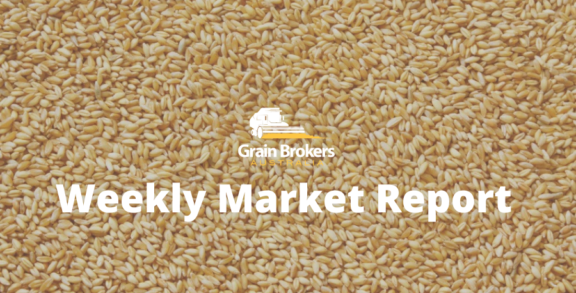The Russian invasion of Ukraine has severely disrupted traditional flows of agricultural commodities throughout the world. This has thrust global food security firmly into the spotlight as both countries play a pivotal role in supplying grains and vegetable oils to consumers across the globe.
Collectively, the two grain production powerhouses traditionally export more than 25 per cent of the world’s wheat and barley requirements, around 15 per cent of global corn exports and as much as two-thirds of international sunflower oil and safflower oil requirements.
With grain shipments out of Ukraine’s Black Sea ports at a standstill and no end to the war in sight, the EU is looking to fill some of the void in 2022/23. In its first outlook for the new crop season, the European Commission forecast that EU exports of common wheat, or soft wheat, could reach 40 million metric tonne in the 2022/23 season commencing July 1, up from 33MMT in the current season. The Commission said the sharp rise in anticipated wheat exports for 2022/23 was a reflection of buoyant global demand and lower supply from Ukraine.
The Commission also expects a sharp drop in EU corn imports next season due to tight global supplies. It sees imports at 9MMT, down almost 36 per cent from 14MMT in 2021/22. The EU is a net importer of corn for the stockfeed industry, and Ukraine is traditionally one of its biggest suppliers. The forecast for grain use in livestock feed is lower next season, with wheat consumption dropping from 38.8MMT this season to 37.6MMT and corn use falling from 64.2MMT to 62.6MMT.
A decision to allow EU farmers to use fallow land for grain production is expected to boost supply in coming years – weather permitting. This move is expected to free up almost four million hectares of fallow land to plant grain crops in 2022/23. While it won’t be the most productive land, it will give farmers more flexibility.
The European Commission will also deploy a 500 million euro financial package to help farmers combat higher energy and fertilizer prices and assist with returning fallow land into agricultural production. The package also includes assistance for Ukraine farmers to plant their summer crops and tend their winter crops.
After a largely mild winter across much of the continent, European winter crops entered spring in relatively good condition. Mild weather and ample rainfall in most regions have been beneficial as the crop emerged from winter dormancy, facilitating an excellent start to field operations.
However, continued dry conditions in south-western Europe remain of concern. Production has already been affected in the southern parts of the Iberian Peninsula (southern Portugal and south-western Spain). However, crop development is still at a very early stage in southern France and north-western Italy, and the production impact of the abnormally dry conditions is only minor at this juncture.
Rain is also required in the rest of Italy, save for its east coast, as well as Slovenia, Croatia, Hungary, Romania and south-western Ukraine to rectify minor moisture deficits and avoid potential yield loss as the crop matures. Crop development has been delayed along the Italian Adriatic coast, Greece, and Turkey due to unseasonably cold and wet conditions, but soil moisture is now almost sufficient to finish the crop once warmer conditions prevail. The precipitation surplus in European Russia is also considered favourable for crop growth and production outcomes.
In its first production estimates for 2022/23, the European Commission expects that the 27 member states would see usable output of soft wheat rise from 130MMT in 2021/22 to 131.3MMT. It also expects soft wheat stocks held in the EU at the end of 2022/23 will fall to 12.2MMT, compared to 13.2MMT at the close of this season.
Meanwhile, in western Ukraine, around 1,100 rail wagons carrying grain destined for European consumers or ports are stuck near Izov, the main rail border crossing between Ukraine and Poland. According to data released by Ukraine’s state-run rail company, 24,190 wagons are waiting to cross the border, 10,320 of which are at the Izov junction. In addition to grain, goods include vegetable oil, iron ore, metals, chemicals and coal.
With its Black Sea ports under siege by Russian troops, Ukraine is looking at land routes such as rail to get its exports to market. However, efforts have been hampered by logistical challenges and bureaucratic red tape due to the sheer volume and variety of goods being transported. Prior to the war, around 98 per cent of Ukraine’s grain exports were via the Black Sea. The export volume by rail was minute in comparison, due to higher transport costs.
One of the biggest logistical issues is the difference in rail track gauges between Ukraine and neighbours such as Poland. A legacy of the Soviet era, the Ukraine railway network has a Russian gauge of 1,520 millimetres, while most of Europe, including Poland, uses lines with an inner gauge of 1,435 millimetres. Belarus and the three Baltic states, Latvia, Lithuania and Estonia, also have the Russian gauge, which has long limited trade into Europe.
For containerised freight, the solution is relatively simple; transfer from the Russian gauge flat wagons onto the European gauge flat wagons. But for bulk cargo such as grain, it is far more complex. Railway staff have to use specially designed jacks to lift the wagons so that each bogey can be switched out from the broader gauge to the narrower gauge. Alternatively, they can unload the grains from the Ukrainian wagons and auger them into the Polish ones. Either way, it is a lengthy process, with only 500 wagons currently crossing the border near Izov per day.
However, the task is mammoth. Trying to replace Ukraine’s ocean export capacity via land routes is impossible in such a short period of time. Even if it were boosted to 1MMT per month for all commodities, it would only be a fraction of that required to clear the export backlog. In the meantime, Europe and other major grain export nations will attempt to fill the void, as well as supporting the millions of Ukraine people suffering at the hands of Putin.
Call your local Grain Brokers Australia representative on 1300 946 544 to discuss your grain marketing needs.





